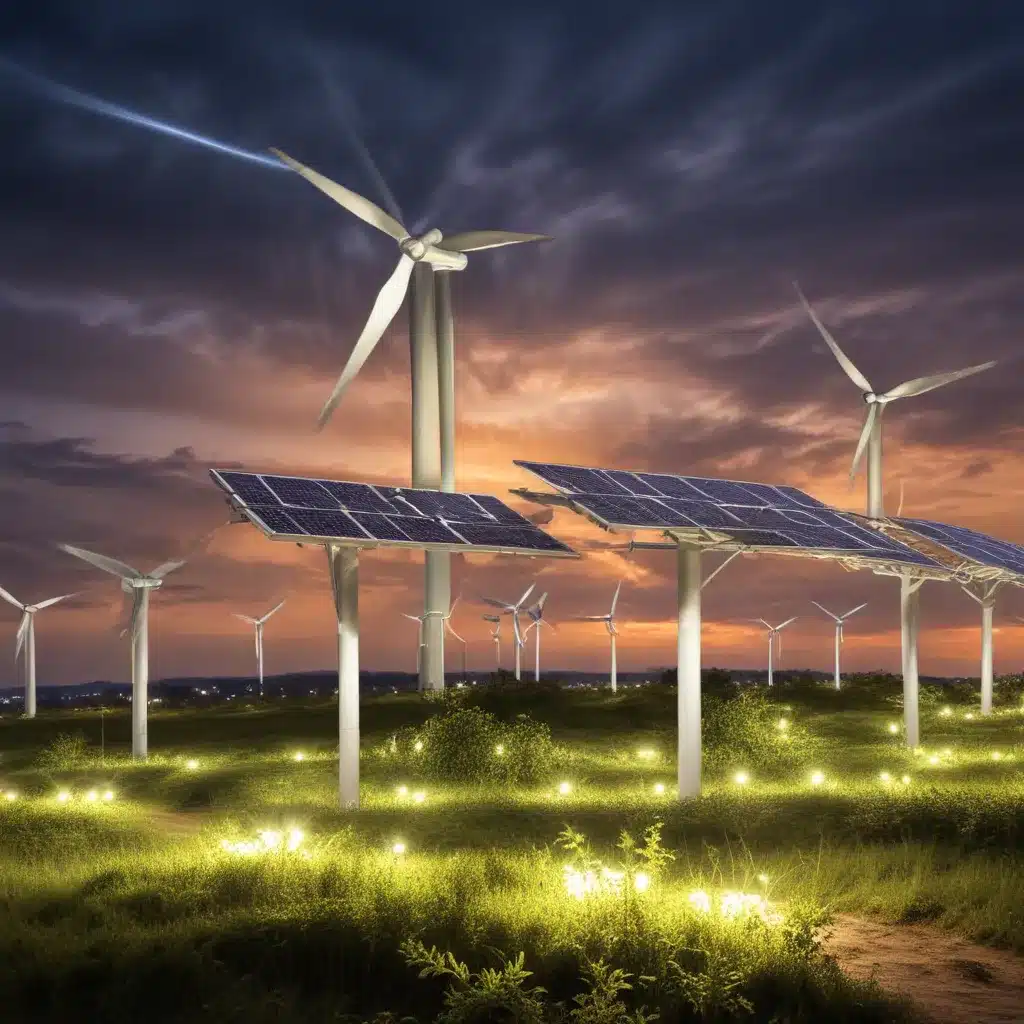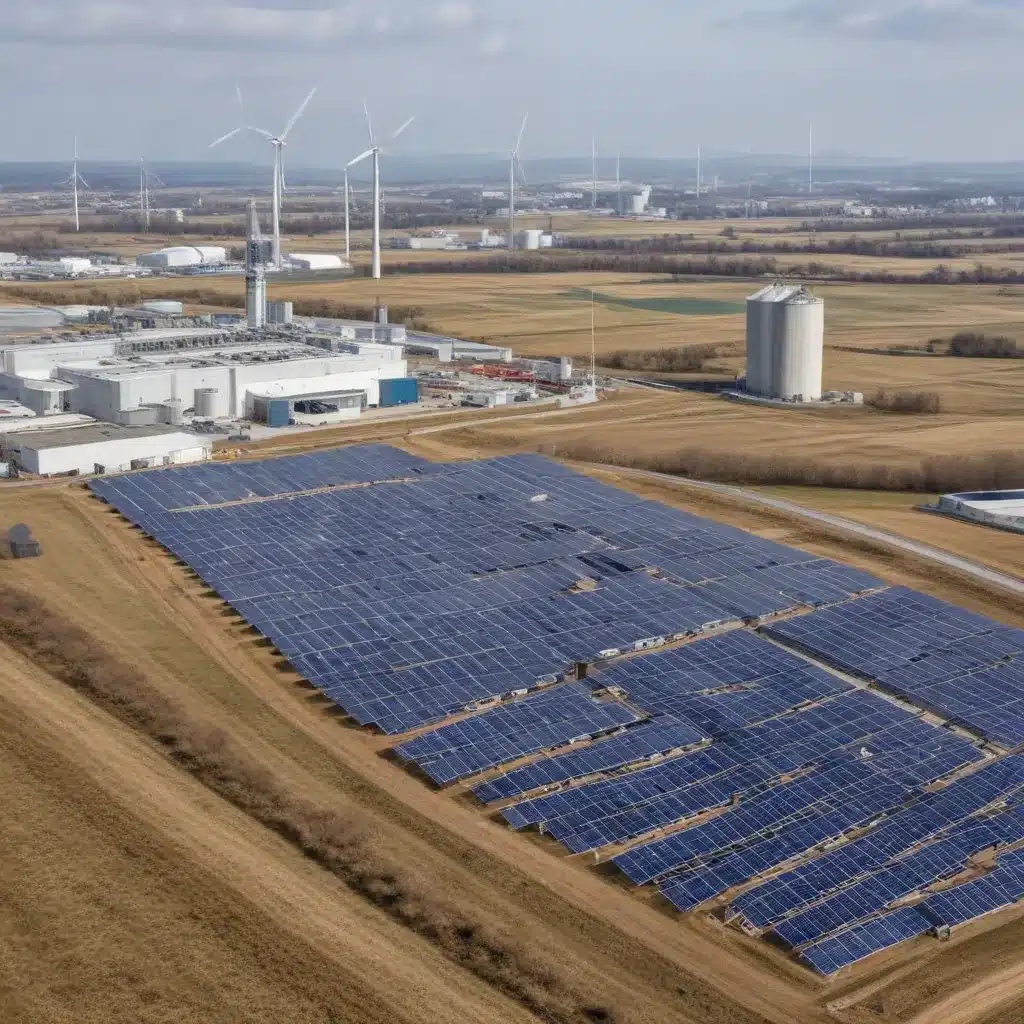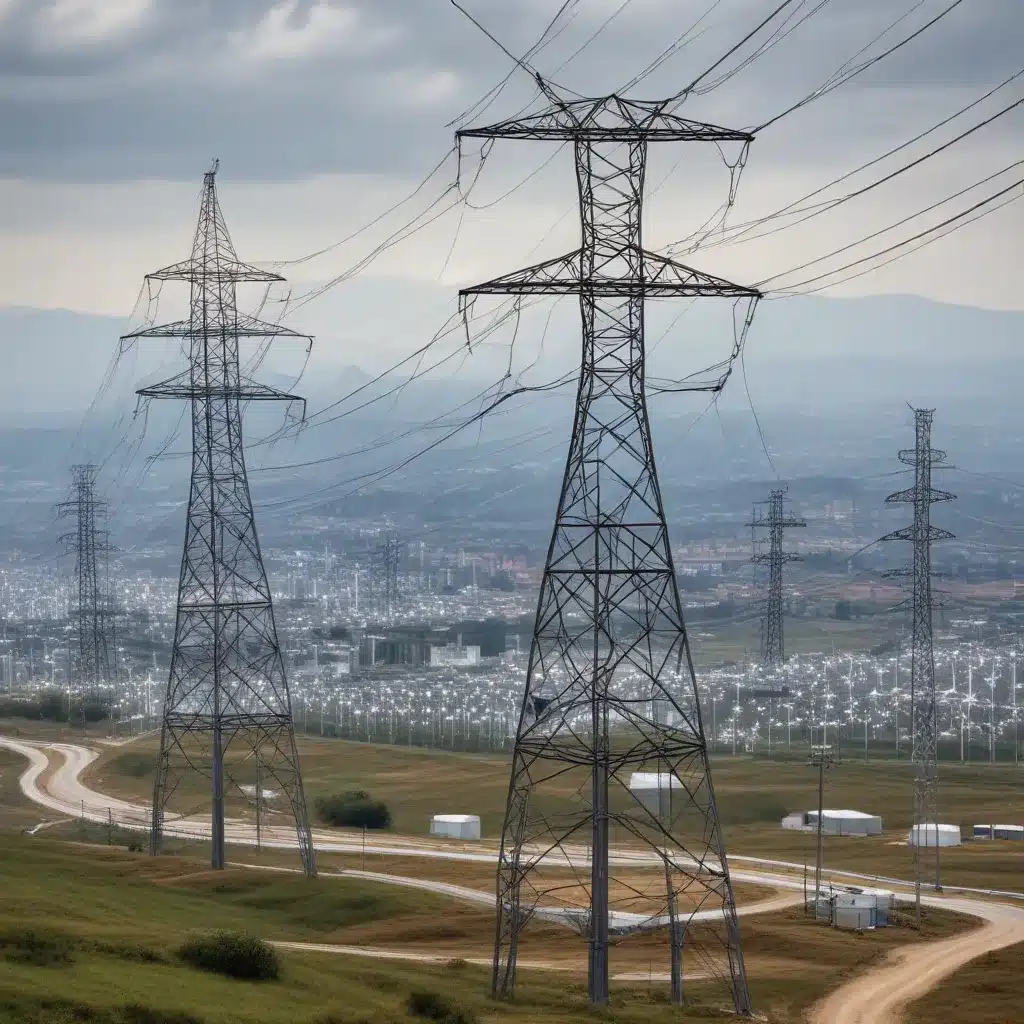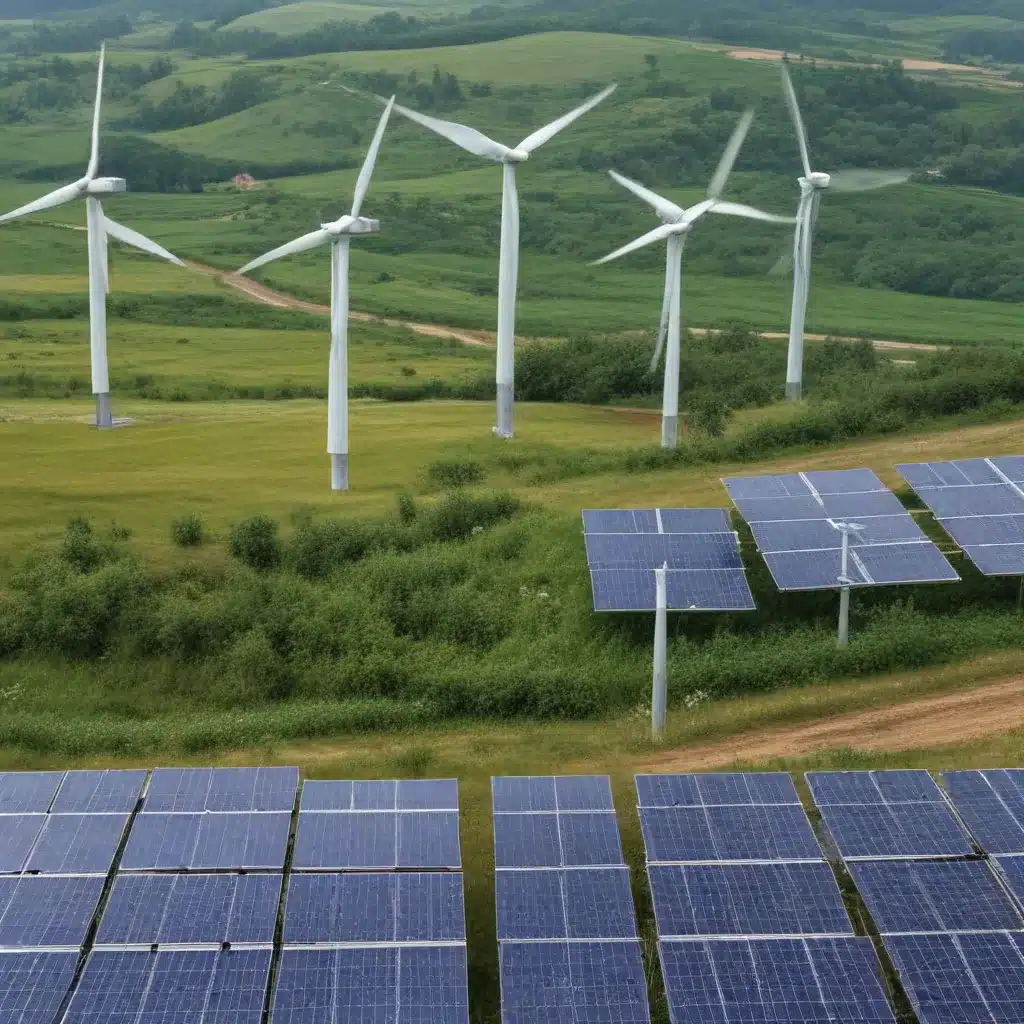
The buildings and construction sector is a significant contributor to global greenhouse gas emissions, accounting for over 37% of worldwide energy-related carbon dioxide output. As the world shifts towards net-zero targets, tackling the decarbonization of this sector is crucial. Fortunately, a growing arsenal of advanced building materials and innovative design strategies are emerging to help curb the environmental impact of the built environment.
Advanced Building Materials
Replacing conventional construction materials with more sustainable alternatives is a key step in reducing the embodied carbon footprint of buildings. This includes exploring high-performance insulation solutions, innovative structural components, and smart windows and glazing.
High-Performance Insulation
Traditional insulation materials like fiberglass and mineral wool have significant embodied carbon due to their energy-intensive manufacturing processes. However, advanced insulation technologies are now available that offer superior thermal performance with a much lower carbon impact. Aerogel insulation, for example, can achieve extremely low thermal conductivity while being made from renewable, biodegradable raw materials. Vacuum insulated panels leverage a near-vacuum environment to minimize heat transfer, delivering industry-leading R-values. These cutting-edge insulation solutions enable deep-energy retrofits and highly efficient new-build construction.
Sustainable Structural Components
The production of steel, cement, and concrete – the mainstays of modern construction – is responsible for enormous quantities of embodied carbon. Innovative mass timber products, like cross-laminated timber (CLT) and glued-laminated timber (glulam), offer a renewable, carbon-sequestering alternative for structural framing. Rammed earth, hempcrete, and mycelium-based materials are also gaining traction as low-impact building materials. These natural, bio-based solutions not only reduce embodied emissions but also enhance a building’s passive thermal performance.
Smart Windows and Glazing
Windows play a critical role in a building’s energy efficiency and comfort. Electrochromic glazing, which can dynamically adjust its tint based on environmental conditions, helps minimize solar heat gain and reduce HVAC loads. Vacuum-insulated glass and aerogel-filled glazing units dramatically improve thermal performance compared to conventional windows. Integrating these advanced fenestration technologies with intelligent building controls can create a truly smart building envelope that adapts to optimize occupant comfort and energy use.
Building Design Strategies
Beyond material selection, innovative architectural and engineering approaches can further decarbonize the built environment. Strategies like passive solar design, energy-efficient HVAC systems, and on-site renewable energy generation are essential components of a comprehensive decarbonization plan.
Passive Solar Design
Passive solar design harnesses the sun’s energy to naturally heat, cool, and light buildings, reducing reliance on mechanical systems. This includes features like strategically placed windows, thermal mass, and shading devices. By minimizing a building’s operational energy needs, passive solar design can significantly lower its operational carbon footprint.
Energy-Efficient HVAC Systems
Heating, ventilation, and air conditioning (HVAC) systems account for a substantial portion of a building’s energy consumption. Transitioning to high-efficiency electric heat pumps, geothermal systems, and district energy networks can drastically reduce operational emissions. Integrating these systems with smart controls and thermal storage further enhances performance and grid responsiveness.
Integrated Renewable Energy
On-site renewable energy generation, such as rooftop solar photovoltaic (PV) systems, is a crucial strategy for decarbonizing the building sector. Coupling renewable energy with energy storage technologies, like batteries and thermal energy storage, enables buildings to become self-sufficient, resilient, and even net-zero energy. Innovative financing models, like Power Purchase Agreements (PPAs), make renewable energy more accessible for building owners.
Sustainable Construction Practices
Beyond the design and materials stage, construction processes themselves must evolve to reduce the overall carbon impact of the built environment. Principles of circular economy, embodied carbon reduction, and sustainable procurement are essential.
Embodied Carbon Reduction
Minimizing the “embodied” carbon associated with the extraction, manufacturing, and transportation of building materials is crucial. Strategies include optimization of material quantities, use of secondary materials and industrial byproducts, and selection of low-carbon alternatives. Construction waste management and on-site reuse or recycling further reduce embodied emissions.
Circular Economy Principles
Embracing circular economy principles in construction can transform the industry from a linear, “take-make-waste” model to a more sustainable, closed-loop system. This involves design for disassembly, modular construction, and the creation of material passports to track and reuse building components at the end of their life cycle.
Sustainable Procurement
Building owners, developers, and construction firms can drive demand for low-carbon materials and services through sustainable procurement policies. This includes setting embodied carbon targets, prioritizing local and certified sustainable suppliers, and incentivizing innovation among material manufacturers.
Building Performance Optimization
Maximizing the energy efficiency and operational performance of buildings is essential for long-term decarbonization. Emerging digital technologies, from digital twins to automated controls, are empowering unprecedented levels of building optimization.
Digital Twins and Simulation
Digital twin technology creates virtual, data-driven replicas of physical buildings. By integrating real-time sensor data, building information modeling (BIM), and advanced energy simulation tools, digital twins enable continuous monitoring, analysis, and optimization of building performance. This allows building operators to identify and address energy waste, optimize HVAC systems, and predict future needs.
Automated Building Controls
Intelligent, automated building management systems can precisely regulate lighting, HVAC, and other systems to minimize energy consumption and carbon emissions. Machine learning algorithms can learn building occupancy patterns and preferences to fine-tune operations, while predictive maintenance capabilities help prevent equipment failures and ensure optimal efficiency.
Continuous Monitoring and Optimization
Embedding building performance monitoring systems, with robust data analytics and visualization, enables building owners to track energy use, identify optimization opportunities, and validate the impact of efficiency measures over time. Coupling these monitoring capabilities with ongoing commissioning and retro-commissioning ensures that buildings continuously operate at peak performance.
Policy and Regulation
While technological innovation is essential, policy and regulatory frameworks play a pivotal role in driving large-scale decarbonization of the building sector. Effective building energy codes, financial incentives, and stakeholder engagement are necessary to spur widespread adoption of sustainable building practices.
Building Energy Codes
Mandatory building energy codes, which set minimum performance standards for new construction and renovations, have proven effective in reducing operational emissions. However, only 26% of countries currently have such codes in place for the entire buildings sector. Expanding the coverage and stringency of these codes is a crucial lever for driving decarbonization.
Incentives and Financing
Governments and financial institutions can catalyze the adoption of sustainable building solutions through a range of financial incentives, such as tax credits, grants, and low-interest loans. Innovative financing models, like green bonds and energy performance contracting, also help overcome the upfront cost barriers to deep energy retrofits and new high-performance construction.
Stakeholder Engagement
Achieving a net-zero building sector requires the meaningful engagement and collaboration of all stakeholders, from policymakers and regulators to building owners, developers, designers, and construction firms. Fostering an inclusive, multi-stakeholder dialogue is essential for aligning the industry around common decarbonization goals and accelerating the implementation of sustainable building practices.
The buildings and construction sector stands at a critical juncture, as the world races to meet its climate change mitigation targets. By harnessing the power of advanced materials, innovative design strategies, and sustainable construction practices, the industry can transform itself into a leader in the global transition to a low-carbon future. With the right policy frameworks, financial incentives, and stakeholder collaboration, the decarbonization of the built environment is not only possible but imperative for a sustainable tomorrow.






